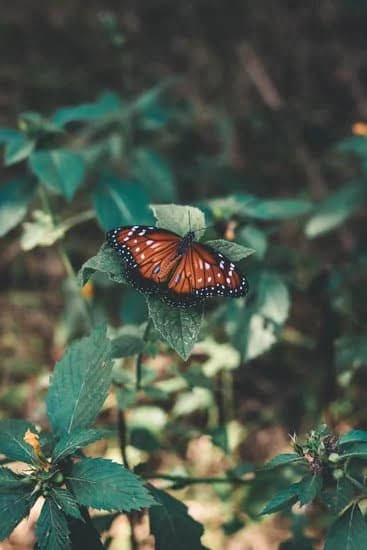Japanese courtyard gardens are renowned for their serene and harmonious design, providing a peaceful retreat in the midst of bustling urban spaces. In this article, we will delve into the art and philosophy behind these exquisite outdoor spaces, exploring ideas and inspiration for creating your own Japanese courtyard garden oasis.
From the history and cultural significance to design elements, plant selection, water features, Zen influences, practical considerations, and stunning examples, we will uncover the secrets to crafting a truly enchanting Japanese-inspired sanctuary.
The tradition of Japanese courtyard gardens dates back centuries and continues to captivate enthusiasts around the world with its distinct beauty and tranquility. By understanding the historical and cultural significance of these gardens, we can gain valuable insight into their design principles and how they create a sense of harmony between man and nature. Incorporating traditional Japanese landscaping techniques and principles allows us to capture the essence of these timeless gardens while adding our own personal touch.
One of the key elements in designing a Japanese courtyard garden is selecting the right plants that evoke a sense of natural balance and harmony. Along with carefully chosen trees, shrubs, and flowers, incorporating water features such as ponds, waterfalls, or streams enhances the ambiance of serenity.
And through Zen influences, we can create a peaceful and meditative atmosphere that transcends mere aesthetics. Join us as we explore these aspects in more detail along with practical tips for maintaining and caring for your very own Japanese courtyard garden masterpiece.
History of Japanese Courtyard Gardens
Japanese courtyard gardens have a rich and fascinating history that dates back centuries. These miniature landscapes were originally designed as a place for relaxation, meditation, and spiritual connection to nature. The concept of the Japanese courtyard garden can be traced back to the Asuka period (538-710 AD), where it was influenced by Chinese garden design principles.
During the Heian period (794-1185), Japanese courtyard gardens began to evolve into more distinct forms, influenced by Shinto and Buddhist beliefs. The gardens were designed to mimic natural landscapes on a smaller scale and often featured elements such as rocks, water features, and carefully placed vegetation. This period also saw the development of various gardening styles such as the dry rock garden (karesansui) and the strolling garden (kaiyū-shiki teien).
The Edo period (1603-1868) further contributed to the evolution of Japanese courtyard gardens, with tea masters and samurai warriors incorporating these serene spaces into their residences. Today, these historic influences are still evident in modern Japanese courtyard garden designs, capturing the essence of tradition while embracing contemporary aesthetics.
| Japanese Courtyard Gardens History | Time Period |
|---|---|
| Asuka period | 538-710 AD |
| Heian period | 794-1185 |
| Edo period | 1603-1868 |
Design Elements
When it comes to designing a Japanese courtyard garden, it’s essential to understand the traditional landscaping techniques and principles that have been employed for centuries. One of the key elements in Japanese gardens is the concept of “borrowed scenery,” which involves incorporating the surrounding natural landscape into the garden design.
This creates a sense of harmony between the man-made and natural elements, blurring the boundaries between the two. Additionally, asymmetry and irregularity are embraced in Japanese garden design, as opposed to the formal symmetry commonly found in Western gardens.
Another important design principle in Japanese courtyard gardens is the use of symbolism and metaphor through carefully chosen elements such as rocks, water features, and plants. For example, rocks are often arranged to represent mountains or islands, while water features like ponds or streams symbolize rivers and seas. Likewise, plant selection is done thoughtfully to evoke different seasons or natural landscapes.
In terms of landscaping techniques, Japanese courtyard gardens often feature carefully pruned trees and shrubs to create sculptural shapes that add visual interest throughout the year. The use of moss as a ground cover is also common, as it adds a lush green carpeting that contrasts beautifully with the other elements in the garden. By incorporating these traditional techniques and principles into your design, you can truly capture the essence of a Japanese courtyard garden.
| Design Principles | Techniques |
|---|---|
| Borrowed Scenery | Incorporating surrounding natural landscape into garden design. |
| Symbolism and Metaphor | Carefully chosen elements representing different natural landscapes. |
| Pruning and Shaping | Carefully pruned trees and shrubs to create sculptural shapes. |
Plant Selection
When creating a Japanese courtyard garden, choosing the right trees, shrubs, and flowers is essential to capture the essence of traditional Japanese landscaping. The selection of plants plays a crucial role in creating a serene and harmonious outdoor space that reflects the beauty of nature. Here are some ideas for plant selection in a Japanese courtyard garden:
- Japanese Maple: Known for its stunning autumn foliage and graceful form, the Japanese maple (Acer palmatum) is a popular choice for Japanese gardens. Its delicate leaves and vibrant colors add visual interest and elegance to the landscape.
- Cherry Blossom Tree: Symbolizing ephemeral beauty in Japanese culture, the cherry blossom tree (Prunus serrulata) is an iconic feature of Japanese gardens. The fleeting blooms create a breathtaking display and evoke a sense of transience and appreciation for the present moment.
- Bamboo: A versatile and symbolically significant plant in Japanese culture, bamboo adds texture, movement, and a sense of verticality to the garden. Whether used as a privacy screen, windbreak, or focal point, bamboo brings an element of tranquility and refinement to the outdoor space.
- Azaleas: With their vibrant blooms and ability to thrive in partial shade, azaleas are commonly found in Japanese courtyard gardens. These flowering shrubs offer a splash of color and can be pruned into elegant shapes to complement the overall design aesthetic.
In addition to these classic choices, incorporating native Japanese plants such as camellias, pines, irises, and peonies can further enrich the authenticity of a traditional Japanese courtyard garden. When selecting plants, it’s important to consider their growth habits, maintenance requirements, and seasonal changes to ensure a balanced composition that evolves harmoniously throughout the year.
Water Features
Ponds
Ponds are a central feature in many Japanese courtyard gardens, often serving as a focal point of the design. They can be large or small, depending on the size of the garden, and are typically designed to mimic natural bodies of water, with irregular shapes and rocky edges. Koi fish are often kept in these ponds as they add movement and life to the garden.
Waterfalls
Waterfalls are another popular water feature in Japanese courtyard gardens, providing soothing sounds and visual interest. A carefully placed waterfall can create a sense of tranquility and can also help mask unwanted noise from neighboring properties.
Streams
Streams meandering through the garden can add a sense of flow and movement to the space. They are often designed to appear natural, with rocks and boulders along their banks. In addition to their aesthetic appeal, streams can also help with drainage in the garden.
Incorporating water features into a Japanese courtyard garden requires careful planning and consideration of factors such as size, placement, and maintenance. However, when done thoughtfully, these elements can truly enhance the ambiance of the garden, making it a peaceful retreat for contemplation and relaxation.
Zen Influences
Meditation Spaces
One of the key elements of a Japanese courtyard garden is creating spaces for meditation and relaxation. These areas are often designed with simplicity in mind, featuring minimalistic decor and natural elements such as rocks, gravel, and moss. Consider adding a traditional stone lantern or a bamboo water feature to enhance the tranquil ambiance of the space. The goal is to create an environment that encourages mindfulness and contemplation.
Balancing Elements
In Japanese courtyard gardens, the concept of yin and yang is often incorporated to create a sense of balance and harmony. This can be achieved by combining different elements such as smooth stones with rough rocks, or soft moss with structured bonsai trees. By carefully arranging these elements, you can create a visually appealing space that promotes inner peace and tranquility.
Symbolism
Another important aspect of Zen influences in Japanese courtyard gardens is the use of symbolic elements. For example, incorporating a sand or gravel raked into intricate patterns can represent ripples in water or waves in the ocean, symbolizing fluidity and movement. Similarly, carefully placed stepping stones may symbolize a journey or path towards enlightenment. By incorporating these symbolic elements into the design, you can add depth and meaning to your courtyard garden.
By incorporating these Zen influences into your Japanese courtyard garden design, you can create a peaceful and meditative atmosphere that promotes relaxation and introspection. Whether you choose to include meditation spaces, balance different elements, or incorporate symbolism, each element plays a crucial role in achieving the desired ambiance for your outdoor sanctuary.
Practical Considerations
When it comes to creating and maintaining a Japanese courtyard garden, there are several practical considerations to keep in mind. These gardens require regular care and attention to ensure that they remain true to their traditional design principles and continue to thrive. Here are some tips for maintaining and caring for a Japanese courtyard garden:
- Pruning and Trimming: Regular pruning and trimming of trees, shrubs, and other plants is essential for keeping a Japanese courtyard garden looking neat and orderly. This not only helps to maintain the desired shape and form of the plants but also promotes healthy growth.
- Weeding: Keeping the garden free of weeds is important for maintaining its clean and tranquil appearance. Regular weeding is necessary to prevent weeds from taking over and competing with the carefully selected plants in the garden.
- Watering: Proper watering is crucial for the health of the plants in a Japanese courtyard garden. It’s important to water them consistently, especially during dry periods, while also ensuring that they are not overwatered, which can lead to root rot.
In addition to regular maintenance tasks, it’s also important to consider other practical aspects of caring for a Japanese courtyard garden. This includes protecting the garden from pests, diseases, and extreme weather conditions, as well as ensuring that any structural elements such as pathways or water features are kept clean and in good condition.
Ultimately, caring for a Japanese courtyard garden requires dedication and attention to detail, but the result is a beautiful and serene outdoor space that brings joy and tranquility to those who experience it. By following these practical tips, anyone can create and maintain a stunning Japanese courtyard garden that honors the traditions and principles of this timeless art form.
Inspiration and Ideas
In conclusion, Japanese courtyard gardens offer a unique and serene escape from the bustling world outside. With a rich history and cultural significance, these peaceful havens are designed to evoke harmony and tranquility. By incorporating traditional Japanese landscaping techniques, such as minimalism, balance, and symbolism, these gardens create an atmosphere of Zen influences for meditation and relaxation.
When it comes to designing a Japanese courtyard garden, careful consideration must be given to plant selection, water features, and practical maintenance. Whether it’s choosing the right trees and flowers or enhancing the ambiance with ponds and waterfalls, each element plays a crucial role in creating a harmonious space. Additionally, maintaining a Japanese courtyard garden requires attention to detail and dedication to preserving its beauty for years to come.
For those seeking inspiration for their own Japanese courtyard garden, there are countless stunning examples that showcase the beauty and creativity of this traditional design. From simple yet elegant layouts to more elaborate landscapes, these gardens demonstrate the versatility and adaptability of Japanese courtyard garden ideas. Whether you have a small urban space or a larger suburban yard, there are endless possibilities for creating your own oasis of peace and tranquility inspired by these timeless designs.
Frequently Asked Questions
What Are the 5 Elements of a Japanese Garden?
The five elements of a Japanese garden are stone, water, plants, bridges, and lanterns. These elements are carefully arranged to create a tranquil and harmonious space that reflects nature.
How to Make a Japanese Courtyard Garden?
Creating a Japanese courtyard garden involves careful planning and attention to detail. Start by choosing the right location, adding traditional elements such as rocks, gravel, bamboo, and water features. Use minimalism and balance to achieve the desired effect.
What Is a Japanese Courtyard Garden Called?
A Japanese courtyard garden is called “Tsuboniwa.” These small, intimate gardens are designed to be viewed from a single vantage point and often feature carefully placed stones, moss, trees, and water elements to create a peaceful atmosphere.

Welcome to my gardening blog! I am passionate about plants and enjoy sharing my knowledge and experiences with others. In this blog, I will write about everything related to gardening, from tips on how to get started to updates on my own garden projects.





